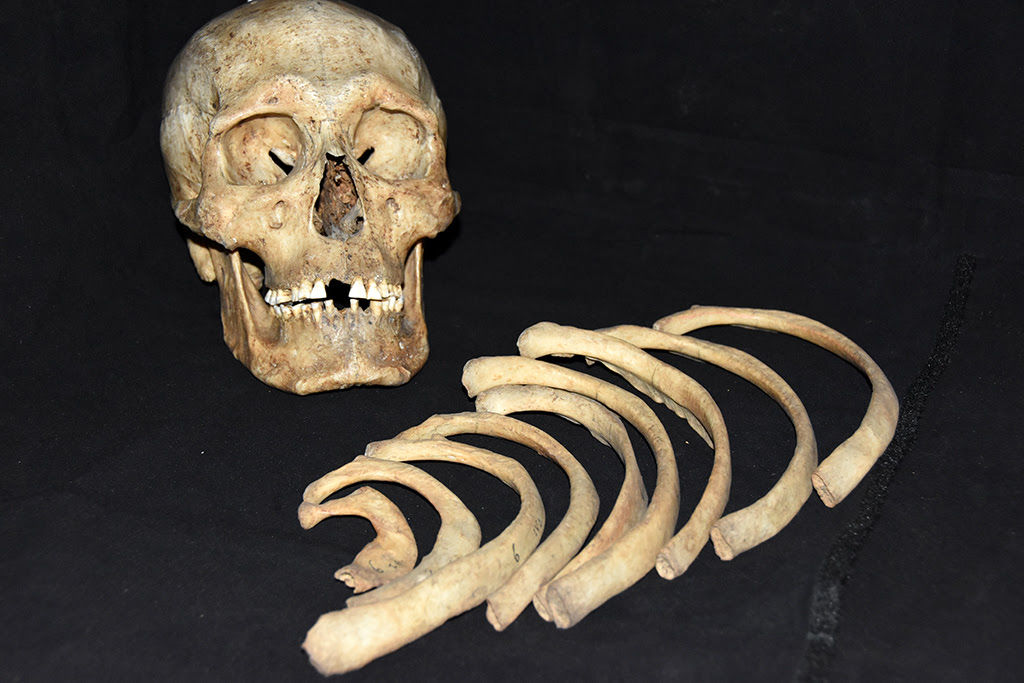
Two genetic mutations are responsible for the extraordinary cold resistance of the Fuegians, the ancient inhabitants of Tierra del Fuego
In 1881 Science published an article on the accounts of early European explorers' voyages to Tierra del Fuego, including those of Charles Darwin, who had described the inhabitants of the southernmost tip of Patagonia in 1871 in his book The Descent of Man. One of the distinctive traits of the people who lived in that distant and inhospitable land was an incredible resistance to the cold, even in the face of insufficient protection systems. The peculiarity of these people, called Fuegians, of often being naked or at most covered by an animal skin thrown over their shoulders, struck the first European travellers.
The Fuegians, decimated by disease and practically extinct by the early 20th, have left many questions unanswered, first and foremost how they managed to withstand the low temperatures to which they were exposed without adequate protection.
Today, thanks to international research coordinated by the Departments of Experimental Medicine, Environmental Biology and Molecular Medicine at Sapienza University of Rome and published in the journal Scientific Reports, data has emerged that could shed light on the high capacity of these ancient inhabitants of Tierra del Fuego to adapt to the cold.
The team of scientists, led by Lucio Gnessi and Giorgio Manzi of Sapienza University of Rome, analysed some Fuegian skeletal remains, which are kept in the Giuseppe Sergi Museum of Anthropology at Sapienza. From the analysis, one would have expected a certain bone fragility, given the exposure of these ancient inhabitants to low temperatures; instead, a bone mineral density similar to that of those living in a temperate climate was observed.
Various issues came to the fore: what protected the Fuegians' bones from the adverse effects of the cold? Is there a correlation between the bone condition and resistance to low temperatures?
Working in collaboration with geneticists and bioinformaticians, and by accessing databases that collect information on the genetic heritage of many populations, the researchers have identified two small previously undescribed genetic variants, which are found only in the Fuegians and not in other populations also exposed to extreme cold. These variants are linked to one of the most important mechanisms of metabolic adaptation to cold, namely the development and activation of brown fat, a particular type of fat whose primary function is to produce heat in response to low temperatures by burning energy.
Brown fat also has a protective effect on the skeleton. In humans, the amount of brown fat is proportional to bone density, and it is known that mice deprived of brown fat lose bone mass when exposed to cold.
"Today it is possible to predict the potential effects of very small genetic variants or even non-coding variants using so-called in silico analysis," says Lucio Gnessi of Sapienza University, corresponding author of the study "which exploits mathematical simulations using sophisticated software and complex algorithms."
"In silico analysis has consistently shown a high probability causal effect between the mutations identified in the Fuegians genome and the development, accumulation and activation of brown fat," concludes Giorgio Manzi of Sapienza University, another corresponding author.
More than a century after the accounts of the 19th-century explorers, these data may finally confirm the hypothesis that the Fuegians' extraordinary adaptation to the cold was the result of genetic variants responsible for an exceptional accumulation of brown adipose tissue.
The research was carried out in collaboration with other international centres including the Centre for Neuropsychiatric Genetics and Genomics in Cardiff, the Nuclear Medicine Unit of the IRCCS Regina Elena National Cancer Institute in Rome, the Natural History Museum of the University of Florence, the Endocrinology and Diabetes Unit of the Campus Bio-medico University in Rome and the Department of Clinical and Experimental Medicine of the Marche Polytechnic University in Ancona.
References:
Bone density and genomic analysis unfold cold adaptation mechanisms of ancient inhabitants of Tierra del Fuego - Mikiko Watanabe, Renata Risi, Mary Anne Tafuri, Valentina Silvestri, Daniel D’Andrea, Domenico Raimondo, Sandra Rea, Fabio Di Vincenzo, Antonio Profico, Dario Tuccinardi, Rosa Sciuto, Sabrina Basciani, Stefania Mariani, Carla Lubrano, Saverio Cinti, Laura Ottini, Giorgio Manzi & Lucio Gnessi - Scientific Reports 2021 DOI: https://doi.org/10.1038/s41598-021-02783-1
Further Information
Lucio Gnessi
Department of Experimental Medicine
lucio.gnessi@uniroma1.it
Giorgio Manzi
Department of Environmental Biology
giorgio.manzi@uniroma1.it
